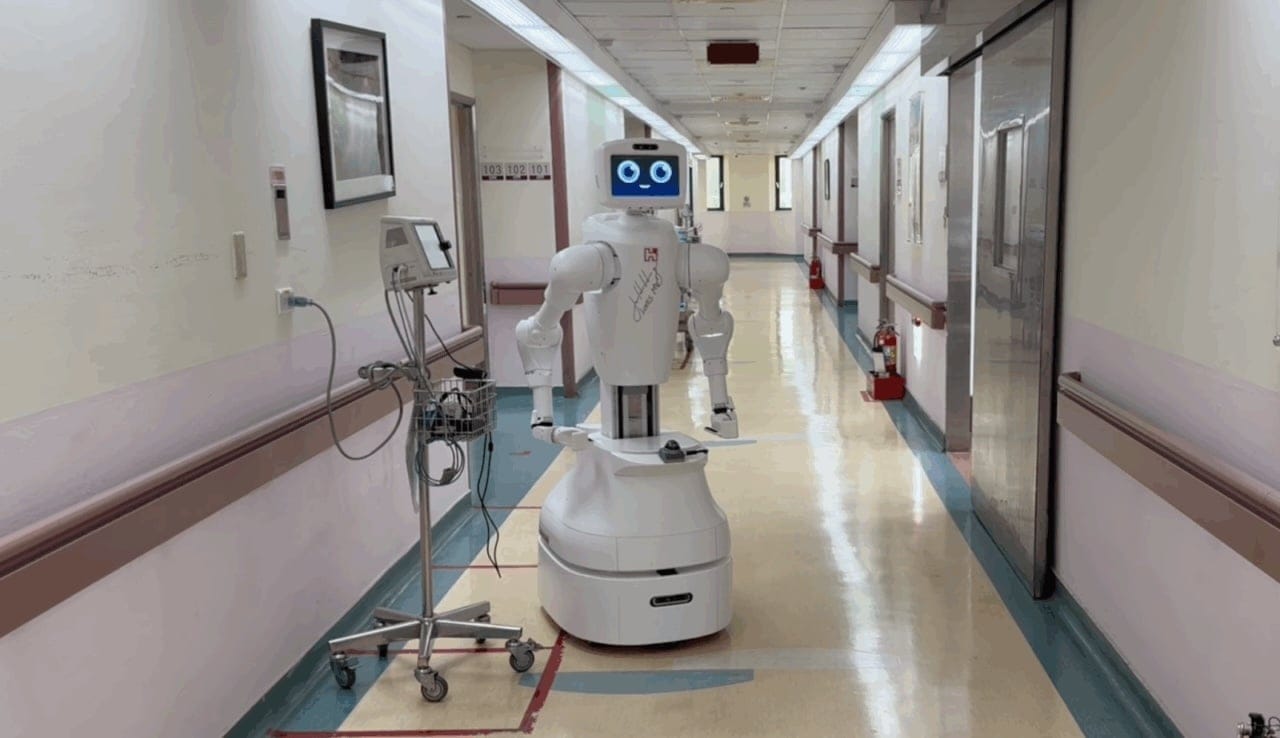The collaboration between Foxconn and NVIDIA is bringing artificial intelligence from data centers to hospital rooms, with robots like Nurabot already easing the burden on healthcare staff.
The shortage of healthcare personnel, especially nurses, is emerging as one of the major global challenges for the next decade. By 2030, it is estimated that there will be a shortfall of up to 4.5 million professionals in this sector. In this context, technology company Foxconn, known for being the largest manufacturer of electronic components in the world, has joined forces with NVIDIA to offer an innovative solution: smart hospitals powered by artificial intelligence.
One of the most notable examples is Nurabot, a collaborative robot designed to assist with repetitive and physically demanding tasks such as transporting medications, samples, or medical supplies. This robot is currently in the testing phase at the Taichung Veterans General Hospital (TCVGH) in Taiwan, and large-scale deployment is expected to start before the end of the year.
A Complete Architecture: From the Data Center to the Edge
Foxconn’s approach is based on a layered physical computing structure for artificial intelligence. It all starts at the data center, where foundational models like FoxBrain, a language model trained with the NVIDIA NeMo platform and Hopper GPUs, enable tasks such as voice recognition, text-to-speech synthesis, and natural language understanding.
In addition, there are advancements in specific diagnostic models, such as the use of the CoDoctor AI platform, also based on NVIDIA, which enhances clinical accuracy in areas like arrhythmia detection, cancer diagnosis, or retinal image analysis.
Digital Twins of Hospitals and Virtual Training
Foxconn is not limited to diagnostics. In partnership with NVIDIA and its Omniverse platform, they are creating digital twins of hospitals such as TCVGH, Baishatun Tung – Mazu Hospital, and Cardinal Tien Hospital. These virtual environments accurately replicate physical facilities, allowing for the optimization of architectural designs, simulation of workflows, and even training robots like Nurabot without real-world intervention.
In the case of TCVGH, the robot has learned to navigate hallways through simulation before carrying out real tasks like delivering care kits or guiding patients during visits. It is estimated that it can reduce the nursing staff’s workload by up to 30%, allowing professionals to focus more on human interaction and less on logistics.
From Collaborative Robotics to the Future of Healthcare
Nurabot has been developed in conjunction with Kawasaki Heavy Industries and utilizes real-time processing via the NVIDIA Holoscan platform on Jetson Orin hardware. Its potential is vast: from operating in multiple languages to assisting with complex physical movements, such as helping patients get out of bed with one nurse instead of two.
The initial deployment has been very well received by both staff and patients, and TCVGH plans to incorporate dozens of units before the end of the year. This advancement was highlighted by Jensen Huang, CEO of NVIDIA, during his speech at COMPUTEX 2025 in Taipei and will be further discussed at GTC Taipei on May 21 and 22.
via: Nvidia blogs

